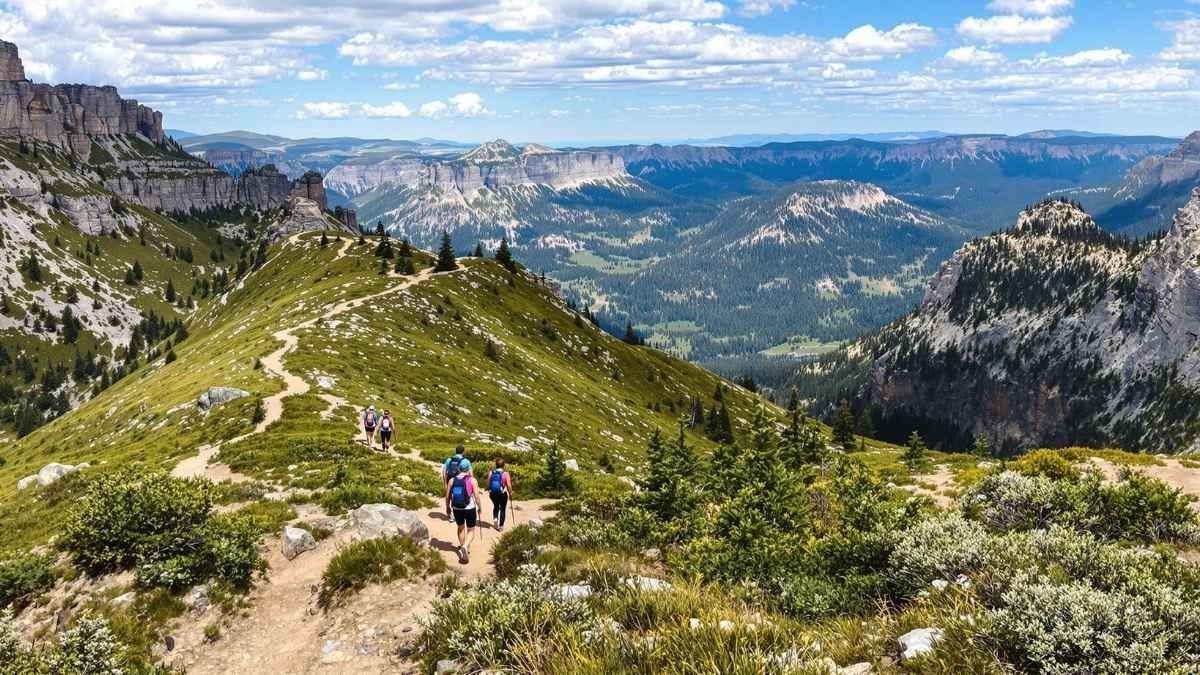
Ever feel like the world is calling you to step beyond the ordinary? There’s something magical about hiking—each trail is a path to discovery, each step a chance to reconnect with nature’s wonders.
From towering peaks to untamed wilderness, these parks are more than destinations; they’re experiences that stir your soul and ignite your sense of adventure. Imagine crisp mountain air, sunlit forests, and breathtaking views that make you feel alive.
Whether you’re chasing serenity or craving awe-inspiring beauty, these trails promise memories that stay with you forever. Ready to lace up your boots and uncover nature’s best-kept secrets? Let’s explore.
1. Hawai’i Volcanoes National Park, Hawaii
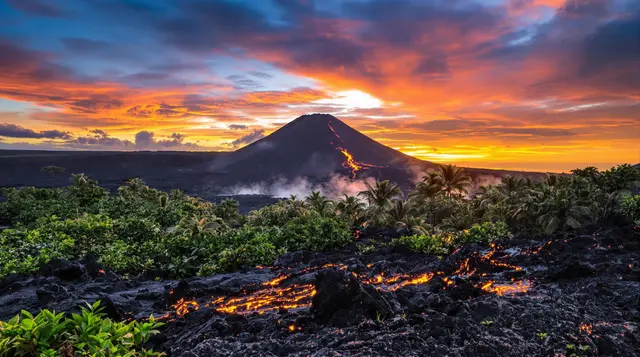
Hawai’i Volcanoes National Park is like stepping onto another planet. With its active volcanoes, steaming vents, and lava fields, the park offers a dramatic and ever-changing landscape. Imagine hiking along trails where molten lava once flowed, carving surreal paths through the terrain. The highlight is undoubtedly the Kīlauea and Mauna Loa volcanoes, two of the most active in the world. Standing at the crater’s edge during a volcanic glow is a memory you’ll cherish forever.
The park isn’t just about the fiery spectacle. It’s home to lush rainforests, ancient petroglyphs, and native Hawaiian culture. Trails like Kīlauea Iki and Devastation Trail give you a glimpse into the power of nature’s fury and its ability to regenerate. Exploring this park is like walking through history and geology books combined with a spiritual connection to Hawaii’s cultural roots.
Whether you’re an experienced hiker or a curious traveler, this park has something for everyone. And let’s be honest: it’s pretty cool to say you’ve hiked on an active volcano!
Best Months to Visit:
- November to April for cooler weather.
- Summer months (May to October) are drier but warmer.
Other Tips:
- Don’t miss the Jaggar Museum for lava displays and Hawaiian culture.
- Wear sturdy shoes; the lava fields can be sharp and uneven.
- The Chain of Craters Road offers incredible views and access to trailheads.
2. Everglades National Park, Florida
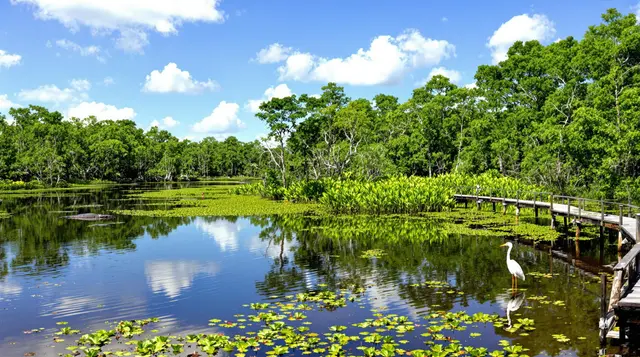
The Everglades isn’t just a swamp—it’s a unique ecosystem teeming with life, from alligators to rare birds and even manatees. Hiking here feels like venturing into a living, breathing wildlife documentary. Trails like the Anhinga Trail offer easy access to up-close views of wildlife, while the Gumbo Limbo Trail leads through a tropical hardwood hammock. There’s a sense of mystery as you walk these trails, surrounded by dense vegetation and the occasional splash of water.
What makes the Everglades special is its slow-moving “river of grass.” The scenery is serene yet alive with subtle movements. The park also offers kayak and canoe options, allowing you to paddle through mangroves and spot dolphins and otters. It’s a peaceful but thrilling adventure for nature lovers.
For those who love photography, the Everglades are a dream. The sunsets are magical, with reflections bouncing off the water like a mirror. Trust me, it’s a place that stays with you long after you leave.
Best Months to Visit:
- December to April (dry season) for pleasant weather and fewer bugs.
Other Tips:
- Bring insect repellent—the mosquitoes here are relentless in summer.
- Visit Shark Valley for panoramic views from the observation tower.
- Early morning hikes offer the best chance to spot wildlife.
3. Big Bend National Park, Texas
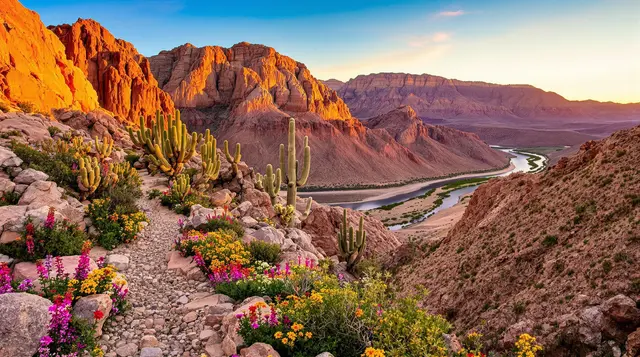
Big Bend feels like a hidden gem in the middle of the vast Texan desert. With its rugged mountains, canyons, and the winding Rio Grande, the park offers a stunning diversity of landscapes. The hiking trails here range from desert paths like the Chimneys Trail to the lush environments of the Chisos Mountains. The South Rim Trail, in particular, rewards you with breathtaking views that stretch into Mexico.
One of the most striking features of Big Bend is the night sky. Far from city lights, the park boasts some of the darkest skies in the U.S., making it ideal for stargazing. Imagine lying on your back after a day of hiking, watching the Milky Way spill across the heavens—pure magic.
The park also has a rich history, from Native American rock art to stories of early settlers. Exploring Big Bend feels like stepping into an old Western movie but with plenty of modern-day adventure.
Best Months to Visit:
- October to April for cooler temperatures and clear skies.
Other Tips:
- Carry plenty of water; the desert heat can sneak up on you.
- Don’t miss the Santa Elena Canyon Trail for views of the Rio Grande.
- Pack layers; temperatures can swing dramatically.
4. Badlands National Park, South Dakota
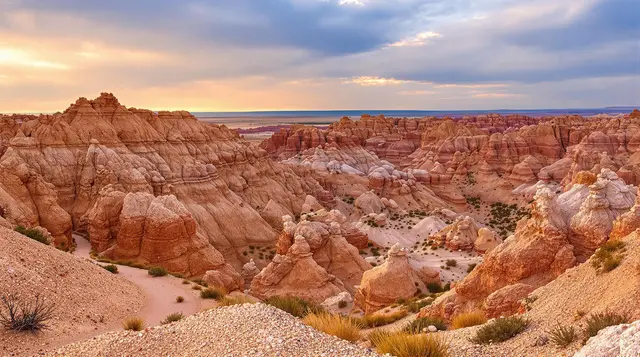
The Badlands are otherworldly. Its jagged peaks, sprawling grasslands, and layered rock formations create a landscape that’s both rugged and hauntingly beautiful. Walking through the Fossil Exhibit Trail or Notch Trail, you’ll feel like you’ve been transported to a prehistoric era. The formations, sculpted by millions of years of erosion, come alive at sunrise and sunset when the colors shift dramatically.
Wildlife thrives in the park, from bison and bighorn sheep to prairie dogs. As you hike through these expansive terrains, you might hear the chirps of the prairie dogs or spot a herd of bison grazing in the distance. It’s a reminder of the untamed spirit of the American West.
For history buffs, the Badlands have an incredible fossil history. The park preserves some of the richest fossil beds in the world, adding an educational layer to your outdoor adventures.
Best Months to Visit:
- Late spring or early fall for mild weather and fewer crowds.
Other Tips:
- Don’t miss the Badlands Loop Road for incredible scenic overlooks.
- Wear sunscreen; there’s little shade in the park.
- Camping here under the stars is unforgettable.
5. Crater Lake National Park, Oregon
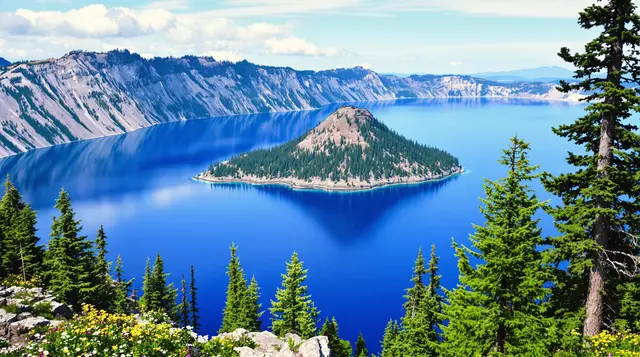
Crater Lake is a spectacle of nature—a deep, sapphire-blue lake formed within a collapsed volcano. It’s a place where hiking trails like Cleetwood Cove and Garfield Peak take you to jaw-dropping vantage points. The sheer beauty of the lake, surrounded by cliffs and forests, makes every step worth it.
The park offers a sense of serenity that’s hard to find elsewhere. Whether you’re standing at the rim or taking a boat tour to Wizard Island, the views are nothing short of mesmerizing. For me, it felt like nature’s version of a masterpiece painting—perfectly still yet full of life.
In the winter, Crater Lake transforms into a snow-covered wonderland, offering a completely different experience for those willing to brave the cold. It’s a park for all seasons, each one offering its unique charm.
Best Months to Visit:
- July to September for clear lake views and accessible trails.
- Winter for snowshoeing and cross-country skiing.
Other Tips:
- Bring layers; temperatures can be chilly even in summer.
- Don’t miss the Rim Drive for panoramic views.
- Swimming is only allowed at Cleetwood Cove Trail.
6. Guadalupe Mountains National Park, Texas
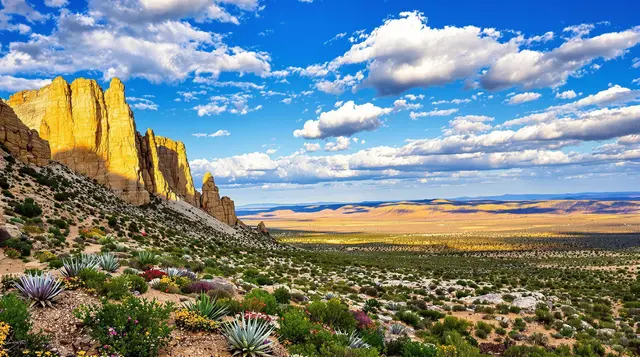
Nestled in West Texas, Guadalupe Mountains National Park is a hidden treasure for hikers seeking solitude and natural beauty. With its towering peaks, fossil-filled canyons, and desert landscapes, the park offers a refreshing escape from the ordinary. Trails like the Devil’s Hall and Guadalupe Peak Trail (the highest point in Texas) provide sweeping views that make every step worth the effort.
The unique geology here tells a fascinating story. The park was once an ancient underwater reef, and today, its rugged cliffs and canyons reveal millions of years of history. You’ll even find fossils embedded in the limestone, a tangible connection to the park’s ancient past.
What sets this park apart is its quiet charm and remote location. It’s a place where you can hike for hours without seeing another soul, making it perfect for those seeking a deep connection with nature.
Best Months to Visit:
- Fall (October to November) for cooler weather and fall foliage in McKittrick Canyon.
Other Tips:
- Bring plenty of water and snacks; services are limited in the park.
- Don’t miss the Smith Spring Trail for a lush oasis amidst the desert.
- Sunrise hikes are magical here—Guadalupe Peak Trail is a favorite.
7. Channel Islands National Park, California
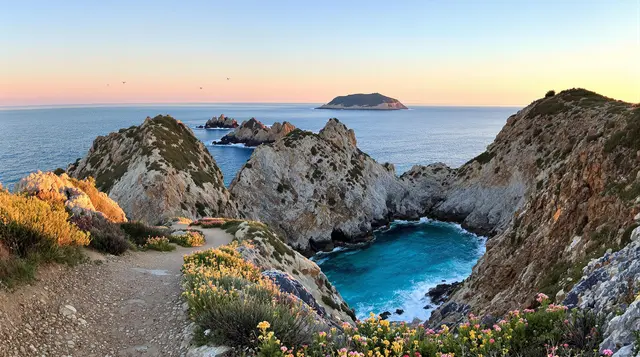
Often called the “Galápagos of North America,” Channel Islands National Park feels like a world away, even though it’s just off the California coast. This archipelago is home to stunning sea cliffs, hidden coves, and diverse wildlife. Hiking trails on islands like Santa Cruz or Anacapa lead to breathtaking coastal views and encounters with unique flora and fauna found nowhere else.
One of the park’s highlights is its rich marine life. Alongside hiking, you can kayak through sea caves, snorkel with seals, or simply sit and watch whales pass by. It’s a reminder of the interconnectedness of land and sea.
The quiet and undeveloped nature of the islands offers a rare chance to experience California’s coastline as it might have been hundreds of years ago—raw, untouched, and utterly captivating.
Best Months to Visit:
- Summer and early fall for the best weather and calm seas.
Other Tips:
- Access is by boat or plane; plan to book ferries.
- Don’t miss the Scorpion Canyon Loop for stunning island views.
- Bring layers and water; services are minimal once on the islands.
8. Congaree National Park, South Carolina
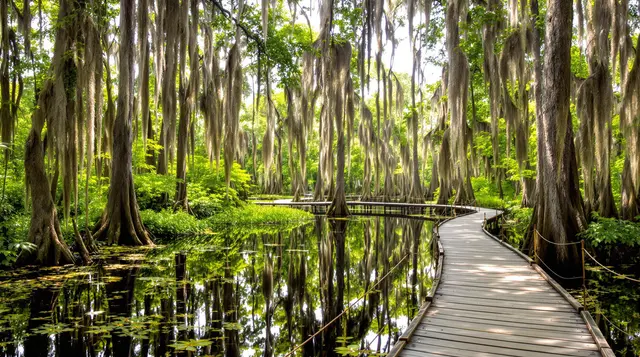
Congaree National Park offers an entirely different hiking experience. With its towering old-growth trees, swampy landscapes, and biodiverse ecosystem, it feels like stepping into another world. The Boardwalk Loop Trail is an easy way to immerse yourself in the heart of the swamp, while trails like Weston Lake Loop offer a longer, more adventurous journey.
This park is a wildlife sanctuary, and it’s common to spot river otters, turtles, or even the occasional alligator. The unique “champion trees” here are some of the tallest and oldest in the Eastern United States, making every hike feel like a walk among giants.
In spring and summer, the park’s firefly displays are nothing short of magical, as thousands of synchronous fireflies light up the swamp in a mesmerizing dance.
Best Months to Visit:
- Spring and fall for pleasant weather and fewer bugs.
Other Tips:
- Bring insect repellent and waterproof boots; it’s a swamp, after all.
- Don’t miss the firefly displays in May.
- Guided canoe tours offer a unique perspective of the park.
9. Katmai National Park and Preserve, Alaska
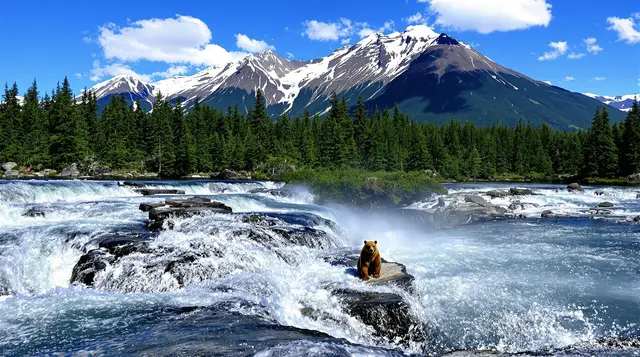
Katmai National Park is remote, rugged, and unforgettable. Known for its iconic brown bears fishing for salmon at Brooks Falls, it’s a haven for wildlife enthusiasts. Hiking here is unlike anywhere else, with trails leading through volcanic landscapes, lush river valleys, and pristine wilderness.
The park’s volcanic history adds a dramatic backdrop to its natural beauty. The Valley of Ten Thousand Smokes, created by a massive eruption in 1912, offers surreal landscapes that make you feel like you’re walking on another planet.
Katmai is also about solitude. Its remote location ensures that every hike feels like a true adventure, with only the sounds of nature to accompany you.
Best Months to Visit:
- June to September for bear viewing and mild weather.
Other Tips:
- Access is by plane; plan well in advance.
- Bring a good camera for bear-watching at Brooks Camp.
- Hire a guide for hiking the Valley of Ten Thousand Smokes.
10. Lassen Volcanic National Park, California
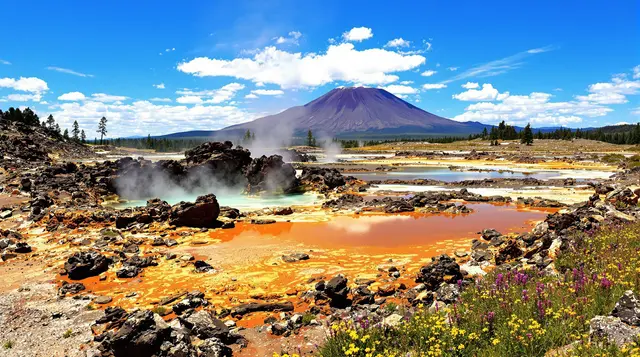
Lassen Volcanic National Park is a geological wonderland, home to steaming fumaroles, bubbling mud pots, and crystal-clear lakes. Trails like the Bumpass Hell Trail offer access to the park’s geothermal features, while the Lassen Peak Trail takes you to the summit for panoramic views.
The park’s diversity is astonishing. One moment you’re walking through fields of wildflowers, and the next, you’re standing on barren lava fields. It’s an intimate glimpse into the power of the Earth’s inner workings.
Winter here transforms the park into a snowy wonderland, perfect for snowshoeing and cross-country skiing. No matter the season, Lassen offers a peaceful and less-crowded alternative to some of California’s busier parks.
Best Months to Visit:
- July to September for snow-free trails and clear weather.
Other Tips:
- Don’t miss the Bumpass Hell Trail for geothermal features.
- Bring layers; weather can change rapidly at higher elevations.
- Stop at Manzanita Lake for a serene picnic spot.
11. Isle Royale National Park, Michigan
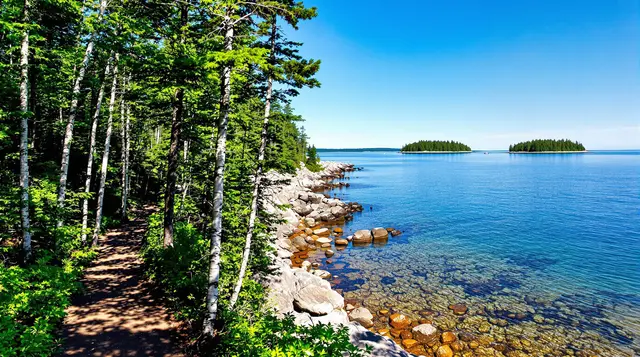
Tucked away in the chilly waters of Lake Superior, Isle Royale National Park is a hidden gem for hikers and adventurers alike. Accessible only by boat or seaplane, it feels like a journey back in time where nature rules supreme. The Greenstone Ridge Trail stretches across the island, offering panoramic views of forests, lakes, and rugged coastlines.
What makes Isle Royale unique is its untouched wilderness and thriving wildlife. You might spot moose wading in quiet ponds or hear the distant howls of wolves at night. It’s the kind of place where you feel completely connected to nature, far from the hustle of daily life.
Camping here is an unforgettable experience, but it’s not for the faint-hearted. The island demands preparation, but the reward is a true sense of solitude and serenity.
Best Months to Visit:
- July to early September for pleasant weather.
Other Tips:
- Pack all essentials; there are no stores on the island.
- Don’t miss the Tobin Harbor Trail for scenic views.
- Bring a good map; cell service is non-existent.
12. Wrangell-St. Elias National Park, Alaska
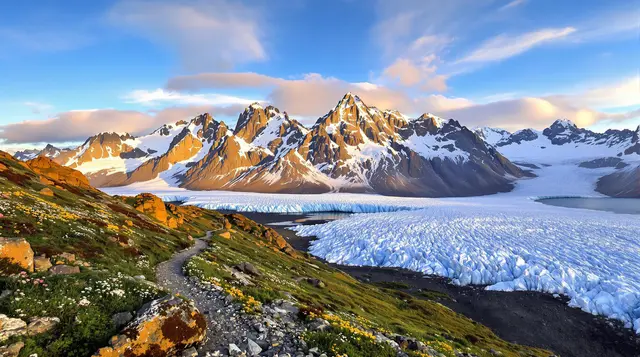
Welcome to the largest national park in the U.S.—a place where towering mountains, sprawling glaciers, and untamed wilderness converge. Wrangell-St. Elias feels like stepping into an explorer’s dream. Trails like the Root Glacier Trail lead you onto shimmering blue ice, while the Bonanza Mine Trail offers sweeping views of the surrounding peaks.
The park’s sheer size is awe-inspiring, but it’s the raw, untouched beauty that stays with you. From abandoned mining towns to vast glacial valleys, it’s a place that tells stories of adventure and endurance. For me, just standing at the base of these massive mountains made me feel humbled and energized.
Whether you’re hiking, ice climbing, or simply soaking in the views, this park delivers a sense of adventure few places can match.
Best Months to Visit:
- June to September for warmer weather and accessible trails.
Other Tips:
- Guided glacier hikes are a must for safety and fun.
- The McCarthy Road offers stunning views on the way to the park.
- Be prepared for rugged conditions and unpredictable weather.
13. Biscayne National Park, Florida
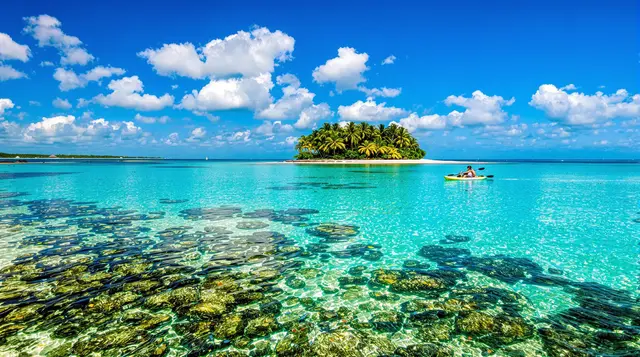
Biscayne National Park isn’t your traditional hiking destination, but it’s a haven for water-based adventures and coastal trails. Located near Miami, this park is 95% water, encompassing turquoise bays, coral reefs, and mangrove forests. Hiking the Spite Trail on Elliott Key, the largest island, offers stunning views of the bay and a chance to explore the subtropical wilderness.
Snorkeling and kayaking are the stars here. The vibrant coral reefs teem with colorful fish and marine life, creating a mesmerizing underwater world. If you’re not into water activities, the islands provide a peaceful escape where you can enjoy gentle hikes and seaside relaxation.
The juxtaposition of Biscayne’s serene beauty against the bustling city nearby makes it an unforgettable escape.
Best Months to Visit:
- December to April for calm seas and pleasant weather.
Other Tips:
- Plan boat trips in advance; access to the islands is limited.
- Snorkel the Fowey Rocks Lighthouse Reef for incredible marine life.
- Watch the sunset over Biscayne Bay—it’s magical.
14. Mesa Verde National Park, Colorado
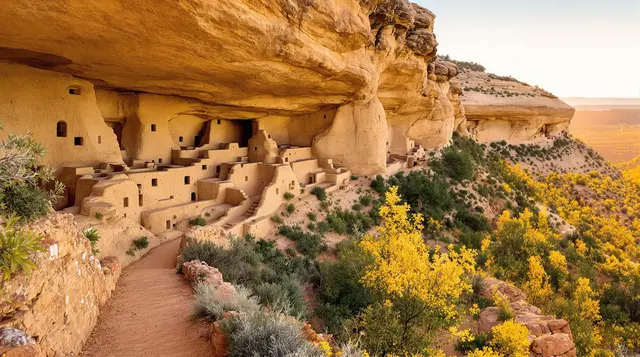
Mesa Verde offers a completely different kind of hiking experience—one steeped in history and culture. Known for its ancient cliff dwellings built by the Ancestral Puebloans, this park combines scenic hikes with archaeological wonders. The Petroglyph Point Trail is a highlight, blending stunning canyon views with access to ancient rock art.
Walking through this park feels like stepping into a time machine. As you explore the dwellings and kivas tucked into the cliffs, you can’t help but imagine what life was like here centuries ago. It’s a hike through both nature and history, where every step reveals new layers of the past.
Mesa Verde’s mix of hiking and storytelling makes it a unique destination for adventurers who love a little mystery.
Best Months to Visit:
- May to October for access to all trails and dwellings.
Other Tips:
- Ranger-led tours offer deeper insight into the history.
- Bring water; trails can be exposed to the sun.
- Don’t miss the Cliff Palace Loop Trail for spectacular views.
15. Great Basin National Park, Nevada
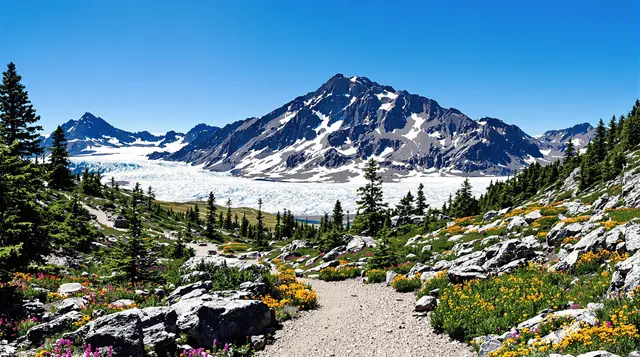
Great Basin is the park you didn’t know you needed. With its ancient bristlecone pines, starry skies, and rugged mountains, it’s a paradise for hikers and stargazers alike. Trails like the Bristlecone Pine Glacier Trail lead you to some of the oldest living trees on Earth, while the Wheeler Peak Trail offers breathtaking alpine views.
The park’s remoteness means fewer crowds, giving you the feeling of having the trails to yourself. And the night skies? Unmatched. Designated as a Dark Sky Park, Great Basin offers some of the best stargazing opportunities in the country.
This is a place where you can truly disconnect, breathe in the mountain air, and marvel at the beauty of Earth’s quiet wonders.
Best Months to Visit:
- June to September for mild weather and clear trails.
Other Tips:
- Don’t miss the Lehman Caves Tour for underground exploration.
- Pack warm layers; it can get chilly, even in summer.
- Wheeler Peak Campground is an excellent spot for stargazing.
16. Death Valley National Park, California/Nevada
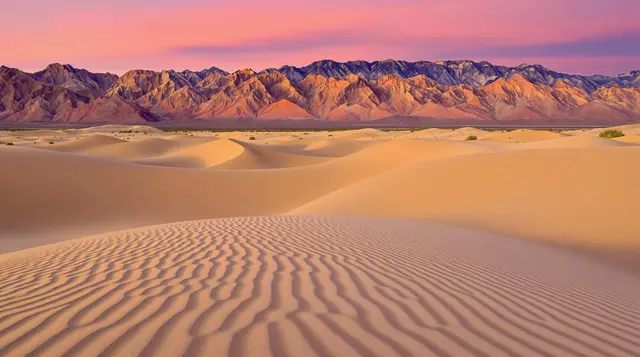
Death Valley is as extreme as it sounds—a land of blistering heat, vast salt flats, and towering dunes. But it’s also a place of haunting beauty, where the desert seems to stretch forever. Hiking through places like Golden Canyon or Mosaic Canyon offers surreal landscapes that are both harsh and mesmerizing.
Despite its harsh name, the park comes alive with life and color, especially during a rare wildflower “super bloom.” And don’t miss the sunrise at Zabriskie Point—it’s an unforgettable spectacle of light and shadow over the golden badlands.
For those willing to brave the elements, Death Valley rewards you with one-of-a-kind adventures.
Best Months to Visit:
- November to March for cooler, more comfortable weather.
Other Tips:
- Carry extra water; dehydration is a real risk here.
- Visit the Badwater Basin, the lowest point in North America.
- Avoid midday hikes in summer—it can reach 120°F!
17. Voyageurs National Park, Minnesota
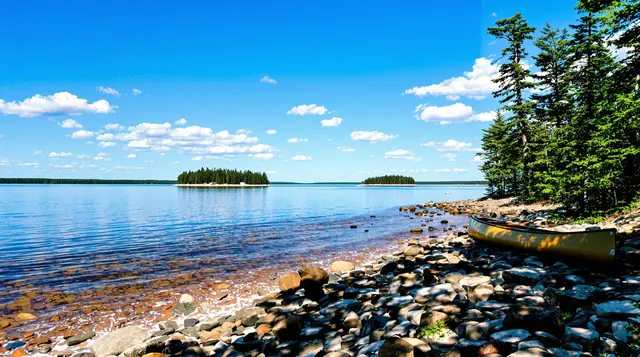
Voyageurs National Park is a water lover’s dream, but it also offers peaceful trails through lush forests and along pristine shorelines. Hiking the Kab-Ash Trail gives you a glimpse of the park’s dense woods and serene lakes. This is a place where the rhythm of life slows down, allowing you to savor every step.
The park’s unique geography, dotted with interconnected waterways, makes it feel like a maze of natural beauty. And the wildlife? Bald eagles, moose, and loons are frequent companions on your hikes.
What makes Voyageurs special is its quiet charm. It’s less crowded than many parks, giving you the space to reflect and reconnect with nature.
Best Months to Visit:
- Late spring to early fall for mild weather and lush greenery.
Other Tips:
- Consider renting a canoe to explore the waterways.
- Watch for northern lights on clear nights—they’re stunning here.
- The Ellsworth Rock Gardens are a quirky and fascinating stop.






